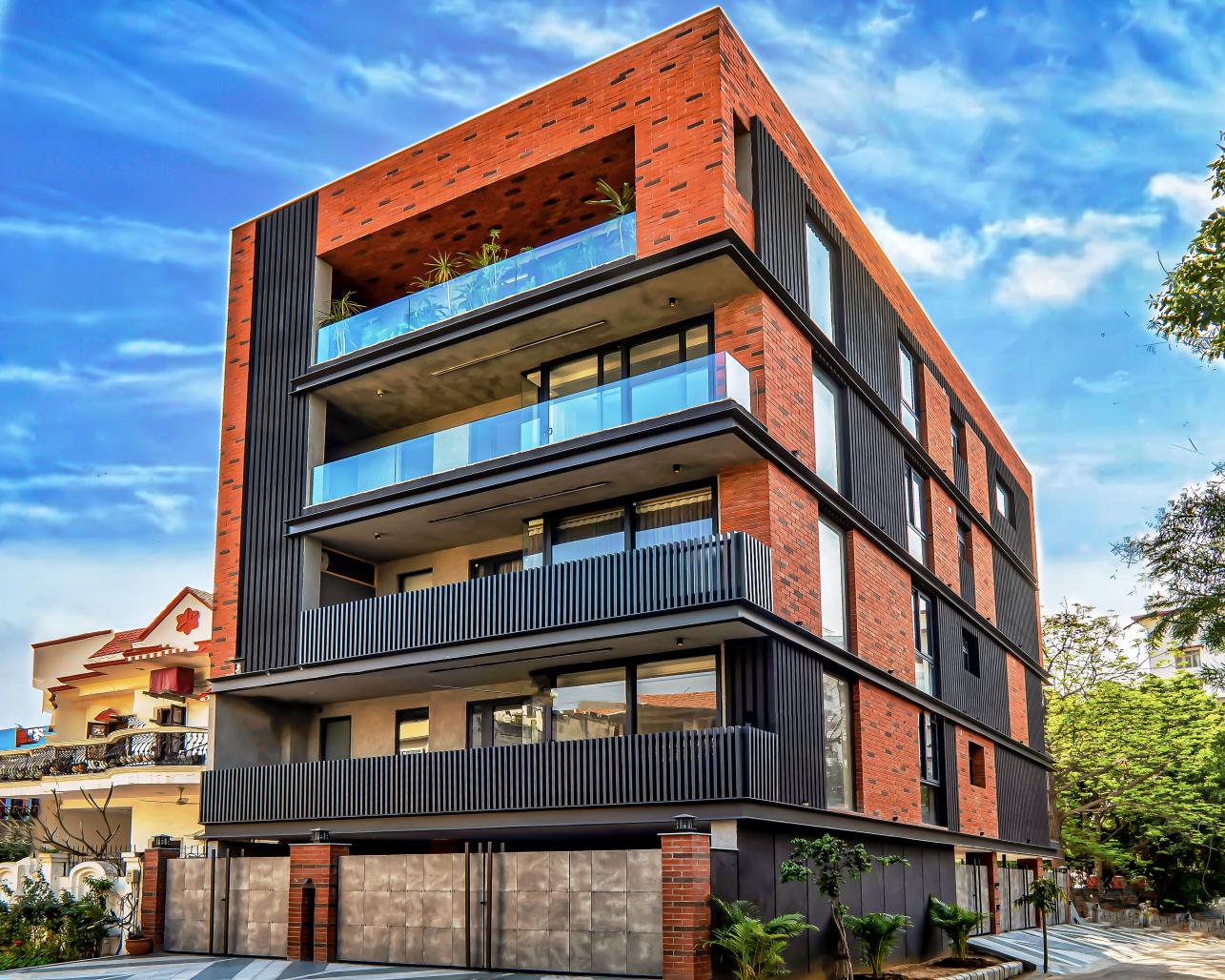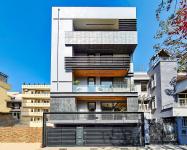In the realm of architecture, facade designs have undergone a remarkable metamorphosis in the previous decade. This transformation has been propelled by technological advancements, growing environmental consciousness, and the urgent need for sustainable construction practices. As we gaze into the future, the potential for facades appears limitless, with a host of innovative possibilities on the horizon. The coming decade is poised to deliver cutting-edge breakthroughs in facade design, encompassing novel materials, captivating designs, and groundbreaking technologies that will revolutionise the aesthetics and functionality of buildings. In this article, Ar. Robin Sisodiya, the visionary Founder and Principal Architect of Asro Arcade, discusses the top trends and predictions for facade design in the next ten years.
Embracing Sustainability and Energy Efficiency
The integration of sustainable materials and energy-efficient solutions stands out as a pivotal trend in modern facade design. Facades play a crucial role in determining a building's energy consumption, and architects are now leveraging eco-friendly materials to construct sustainable structures that are kinder to the environment. Timber, bamboo, recycled steel, and glass are just a few examples of materials that are being incorporated into facade designs to reduce the carbon footprint. Moreover, innovative options like bioplastics, wood-plastic composites, and clay bricks can be combined with other sustainable materials to fashion environmentally-conscious facades.
The Rise of Biophilic Design
Another prominent movement in facade design is the embrace of biophilic principles. Biophilic design involves seamlessly integrating natural elements and materials into architectural masterpieces, fostering a deep connection between people and the natural world while enhancing their overall well-being. Facades that incorporate natural materials such as wood, stone, and lush greenery create a tranquil ambiance that promotes mental and physical health. Furthermore, the inclusion of green facades and green roofs contributes to enhanced thermal comfort and superior air quality within buildings. Parametric facades, which emulate the organic forms found in nature, are anticipated to flourish as a significant trend in the coming decade.
The Influence of Technological Advancements
Technological progress has paved the way for unprecedented possibilities in facade architecture. Digital fabrication and 3D printing, in particular, have granted architects the ability to conceive complex and intricate facades that were once unimaginable. These cutting-edge technologies also facilitate the creation of sustainable facades by optimising material usage and minimising waste. Utilising digital techniques, architects can fabricate copper platinas, enabling the incorporation of customised patterns and designs that infuse buildings with a unique character. When combined with other technological advancements, such as smart glass, these digital marvels culminate in dynamic and energy-efficient facades.
The Emergence of Smart Facades
The rising popularity of smart facades owes much to the advancements in building automation and the proliferation of the Internet of Things (IoT). Smart facades are designed to adapt to changing weather conditions, regulate temperature and lighting, and enhance energy efficiency. These innovative facades can be programmed to cater to the needs of occupants, such as adjusting lighting levels or controlling window openings. For instance, implementing smart glass panels empowers users to manage daylight and solar heat actively, augmenting occupant comfort while significantly reducing energy consumption.
In conclusion, the future of facades is teeming with promise, fueled by a resolute commitment to sustainability, the embrace of biophilic design principles, the advent of groundbreaking technologies, and the proliferation of smart solutions. Architects and designers who wholeheartedly embrace these trends and seamlessly integrate them into their designs will lead the charge in shaping the facade design landscape of the next decade.
2022
2023
The future of facades is teeming with promise, fueled by a resolute commitment to sustainability, the embrace of biophilic design principles, the advent of groundbreaking technologies, and the proliferation of smart solutions. Architects and designers who wholeheartedly embrace these trends and seamlessly integrate them into their designs will lead the charge in shaping the facade design landscape of the next decade.
The future of facades is teeming with promise, fueled by a resolute commitment to sustainability, the embrace of biophilic design principles, the advent of groundbreaking technologies, and the proliferation of smart solutions. Architects and designers who wholeheartedly embrace these trends and seamlessly integrate them into their designs will lead the charge in shaping the facade design landscape of the next decade.




